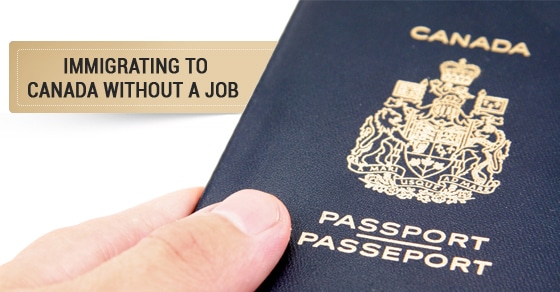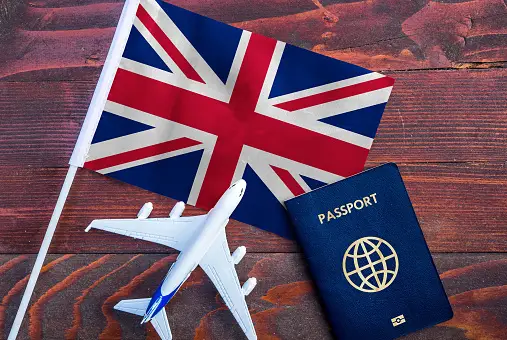Have you been seeking ways to Immigrate to Canada Without a Job Offer? Canada is well-known for being a great place to immigrate to, but it can be hard to get there without a job offer in hand.
Advertisements
There are many reasons why you might not have an employer when you first decide to move to Canada, but that doesn’t mean you’re out of luck.
We know it isn’t easy, but we’ve got the best tips on how to immigrate to Canada without a job offer and make your dreams come true! Here are five steps you can take today.
1) Get a Permanent Residency (PR)
Getting a permanent residency is one of the ways whereby you can immigrate to Canada without a job offer.
With permanent residency comes access to government-subsidized healthcare, discounted university tuition, and a host of other benefits.

Advertisements
The first step towards securing PR is submitting an application for Canadian permanent residency (the first step in getting your Canadian citizenship) by way of sponsorship from an employer or family member living in Canada. If you don’t have any connections to Canada, it can be tough to get sponsored—but there are still ways around it.
For example, if you have a job offer from an international company with operations in Canada, that can also qualify as sponsorship for immigration purposes. If you don’t qualify through either of these routes but want to move to Canada anyway—don’t worry!
There are plenty of other ways to immigrate without a job offer.
Keep reading for more information on how to immigrate to Canada without a job offer.
2) Apply For Skilled Worker Immigration
A worker-based immigration visa is valid for at least three years and allows you to immigrate to Canada without a job offer. There are several different programs, including Federal Skilled Worker, Canadian Experience Class, Provincial Nominee Programs, and Quebec Skilled Worker.
Each program has its own requirements, but all require that you have a job offer from an employer in Canada before applying. Some of these programs also require that you have language skills; however, if English or French is not your first language, it’s possible to take free language classes prior to immigrating so that you can qualify under one of these programs.
The length of time it takes to receive a skilled worker visa depends on which program you apply for and where in Canada you apply. The Federal Skilled Worker Program typically takes six months to process, while Provincial Nominee Programs usually take less than two months. However, some applications can take as long as 18 months to process. You will be notified when your application has been approved and will be given instructions on how to proceed with entering Canada.
3) Choose an Employer
Choosing an employer is important because employers often sponsor foreign employees to immigrate to Canada without a job offer. If you have access to an employer willing to sponsor your immigration, it can make things much easier for you.
If that’s not possible, there are other options. Once you choose an employer in Canada, your next step is to find a job within that company once you’re in the country. You will need to apply for a work permit before you leave your home country.
You should also apply for temporary resident status as soon as possible after arriving in Canada.
This status allows you to stay and work while waiting for permanent residency. Your application for permanent residency must be made within three years of becoming a temporary resident.
It may take several months or even longer to process your application. While you wait, you may want to consider taking some English classes so that you can improve your skills in speaking and writing English.
As previously mentioned, your first option is finding an employer who wants to hire you in Canada. Once you’ve found someone who wants to hire you, they will normally require that you obtain employment authorization via one of two routes: either by receiving a positive Labour Market Impact Assessment (LMIA) from Employment and Social Development Canada (ESDC), or by obtaining sufficient points under Express Entry.
4) Consider Express Entry
Express Entry, which is for applicants under Federal Skilled Worker Class, was introduced in January 2015.
The points system is based on 6 factors that assess an applicant’s likelihood of successfully immigrating to Canada as well as their ability to immediately contribute positively to Canadian society and economy.
Read Also: How To Get USA Visa
An applicant must score at least 67 out of 500 points with no single factor over 40 in order to be eligible. For those who are currently living outside of Canada, there are two streams available: one for skilled workers who have job offers and one for skilled workers who do not have job offers.
If you don’t already have a job offer from a Canadian employer, then it will likely be more difficult to qualify for entry into Canada through Express Entry.
However, if you can find an employer willing to sponsor your application through another stream (such as Provincial Nominee Program), then you may still qualify.
You should also consider applying for a temporary work visa, such as a Working Holiday Visa or International Experience Canada Visa, which allows you to work while traveling and build ties with employers within Canada. This can help bolster your chances of being selected by Express Entry when applying again in future years.
5) Move to Canada With your Spouse or Partner
If you are in a relationship, one of you may be able to apply for permanent residency through your partner.
This is possible if you and your partner have been married for at least two years, or have had children together.
You must also prove that you are both financially dependent on each other, as well as meet certain criteria for physical health. If your application is successful, it means that you will also be able to legally immigrate to Canada without a job offer!
However, only your spouse or partner can sponsor you. The process takes about six months to complete, so make sure to get started early! To learn more about applying with your partner, click here.
How Do I Know Which Type of Visa I Should Apply For?
Most immigrants choose between two main types of visas: those based on employment and those based on family relationships.
Since we already talked about working visas above, let’s focus on what you should do if you plan to immigrate based on having a close relative in Canada.
You can only apply for PR once every four years, so choosing which visa category is right for you requires some research.
Advertisements






